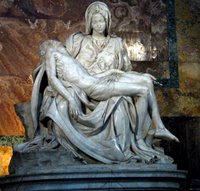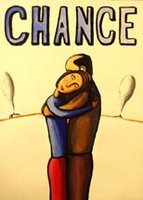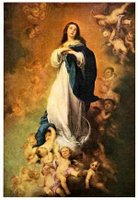 One of the biggest questions raised it The Da Vinci Code is whether or not Jesus Christ was married. His marriage, in fact, forms the basis of the whole Merovingian theory, so it is crucial to form an opinion one way or the other.
One of the biggest questions raised it The Da Vinci Code is whether or not Jesus Christ was married. His marriage, in fact, forms the basis of the whole Merovingian theory, so it is crucial to form an opinion one way or the other.
It DOESN'T state in the Bible that Jesus was married. However, it would have almost certainly have stated the fact if he was not, if that were the case. It was as much a duty for a father to ensure that his son married when he reached a certain age as it was for him to ensure that he was circumcised when a baby. Furthermore there was a legal requirement for the

heir to the Davidic throne to marry.
The rules that governed dynastic marriages, such as Jesus would have taken part in, differed greatly from those followed by ordinary Jewish people. The only reason that a sexual relationship was permitted to take place was to procreate. The whole marriage/sex custom was strictly regulated. Laurence Gardner goes into the subject in the detail in
Bloodline of the Holy Grail.
There was a period of betrothal of three months and a First Marriage with anointing took place in September. This marked the beginning of the espousal period. However, it was not until the first half of December of the same year that a sexual relationship was allowed.
This was to ensure that a baby would be born in September, the month of Atonement. If this liaison resulted in conception, the sexual relationship could only resume in the following December. Until the Second Marriage in March, the woman was considered to be an
almah. This
meant "young woman," which had no sexual connotation. It is also interpreted as "virgin," meani

ng, obviously incorrectly in the case, "virgo intacto."
At the time of the Second Marriage in March, the bride would therefore be three months pregnant. The reason for this three month delay was to allow for a possible miscarriage. It also meant that the husband could withdraw from the marriage if the woman proved herself to be intertile. Apart from the time in December when sexual relations were allowed, husbands and wives lived apart.
At the point at which they separated, the wife was referred to as a
widow which was one rank below an
almah. She was required to weep for her husband, described in Luke 7:38 when she "stood at his feet behind him weeping, and began to wash his feet with tears." If Christ had been conceived during this "widow" period (and it does seem that he was conceived at some points before Mary and Joseph's wedding was complete) that would make Christ the "son of a Widow." This, of course, how Hiram Abiff is referred to in Freemasonry; what Perceval is referred to as in the Grail legends; and what Horus is referred to as in Egyptian mythology.
One o

f the aromatic ointments used in marriage rites was spikenard, which is used nny Mary of Bethany, otherwise known as Mary Magdalene, to anoint Jesus. She anointed his head at the house of Simon Zelotes, better know as Lazarus. In June, 30 AD, she anointed his feet with spikenard at the wedding feast at Cana.
John does not mention the actual wedding at Cana - only the feast. Among the guests were the disciples and "unclean" Gentiles. It seems clear that it was Jesus who was the bridegroom on this occasion. When the incident concerning the lack of Communion wine arose, Jesus' mother told the servants to do whatever he told them to do. It would be out of the question for a guest at the wedding to be allowed this right.
The actual ceremony would take place the following September. Mary Magdalene anointed Jesus' feet again in March, 33 AD, and wiped them dry with her hair. The only person who was allowed to anoint with spikenard was a Messianic bride and the only times that it was permitted were at the First and Second Marriage ceremonies.
It was the custom of the Egyptian kings to

marry their sisters. The King of Judah did not follow this practice but considered that the regal succession went down the female line. John the Baptist was of the Zadok male line and the wives of this line always took the title Elisheba (Elizabeth). The wives of the Davidic line, which Jesus belonged to, took the title Mary. This explains why both Jesus' mother and wife are called Mary.
In one of the Gnostic Gospels, the Gospel of Philip, which teh Christian Church repressed and which The Da Vinci Code's Sir Leigh Teabing (whose nme is a play on Holy Blood, Holly Grail authors Leigh and Baigent, of which Teabing is an anagram) considers to be "always a good place to start," the affection between Mary Magdalene and Jesus is described, as Dan Brown tells us:
And the companion of the Savior is Mary Magdalene. But Christ loved her more than all the disciples, and used to kiss her often on the mouth. The rest of the disciples were offended by it and expressed disapproval. They said unto him, "why do you love her more than all of us?" The Savior answered and said to them, "Why do I not love you like her?....Great is the mystery of marriage - for without it the world would not have existed. Now the existence ot the world depends on man, and the existence of man on marriage."
(to be continued..)
Sources :Chapter Eight of Da Vinci Decoded by Martin Lunn


















